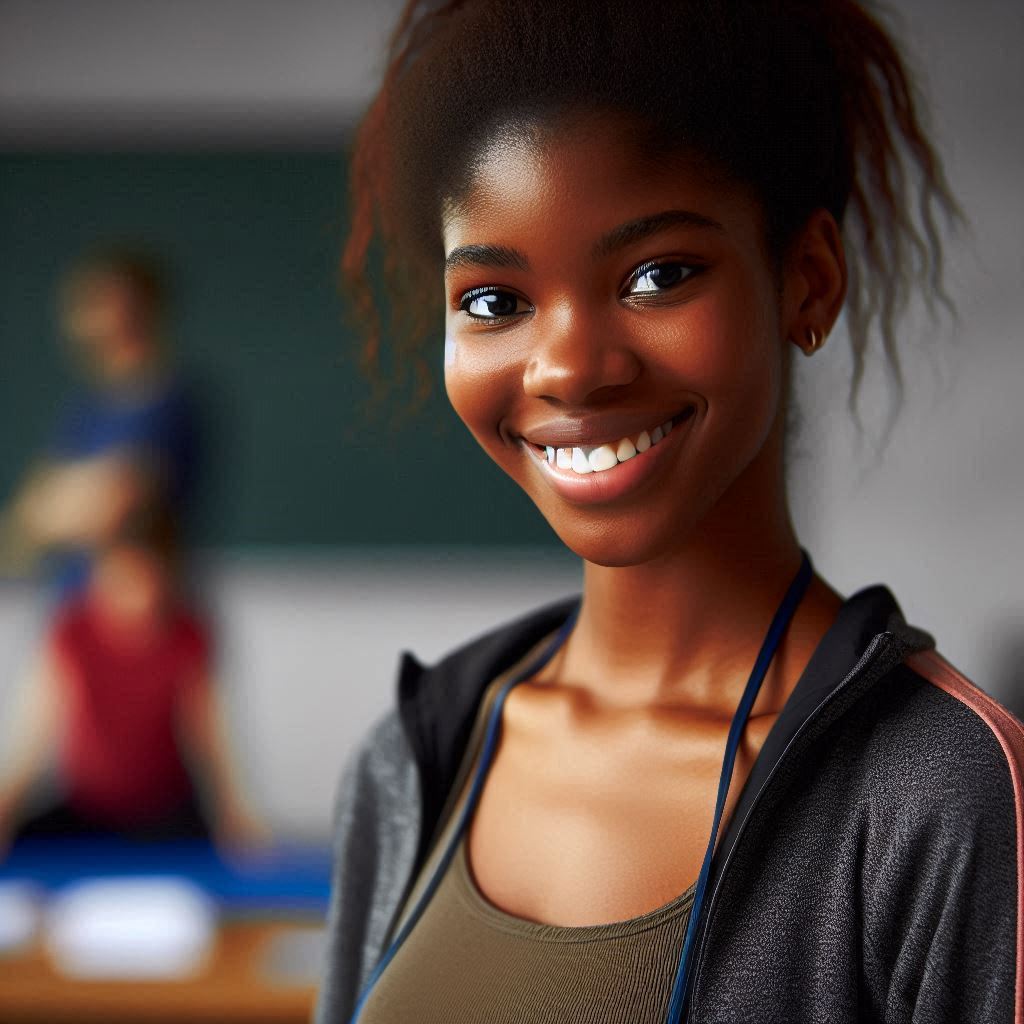Introduction
Physical and Health Education involves teaching students about fitness, nutrition, and overall well-being.
Balancing theory and practice is crucial to ensuring students receive a comprehensive education that prepares them for a healthy lifestyle.
Physical and Health Education is a discipline that focuses on educating individuals about the importance of physical activity, proper nutrition, and overall health and wellness.
To truly understand the principles of physical and health education, students must not only learn the theory behind concepts but also put them into practice.
This hands-on approach allows students to experience first-hand the benefits of leading a healthy lifestyle.
In this blog post, we will delve into the significance of balancing theory and practice in Physical & Health Education.
We will explore how educators can effectively integrate both aspects into their teaching methods to provide students with a holistic education that promotes lifelong wellness.
Theoretical Framework of Physical & Health Education
When it comes to Physical and Health Education (PHE), having a solid theoretical foundation is crucial for both educators and students.
By delving into the theoretical aspects of PHE, we can gain a deeper understanding of the principles that underpin this field and how they inform our teaching practices.
Theoretical Foundations of PHE
- PHE draws upon various theories from fields such as psychology, sociology, and exercise science.
- The Ecological Systems Theory by Bronfenbrenner is often used to understand individuals within their environments.
- The Social Learning Theory by Bandura emphasizes observational learning and modeling in PHE.
Understanding these theoretical foundations allows educators to tailor their teaching methods to meet the diverse needs of students.
By integrating theories like the Ecological Systems Theory and Social Learning Theory into lesson plans, educators can create a more engaging and effective learning experience.
Importance of Understanding the Theoretical Aspects
- Understanding theory helps educators make informed decisions about curriculum design and teaching strategies.
- It provides a framework for critically analyzing current practices and implementing evidence-based interventions.
- Knowing the theoretical aspects of PHE enhances the quality of instruction and student learning outcomes.
It is essential for educators to delve into the theoretical aspects of PHE to enhance their teaching practices.
By understanding the theoretical underpinnings of PHE, educators can create a more enriching learning environment that caters to the holistic development of students.
How Theory Informs Practice in PHE
- Theory guides educators in designing curriculum that is based on evidence and best practices.
- Practical applications of theory in classroom settings promote student engagement and learning retention.
- Educators can assess the effectiveness of their teaching methods by reflecting on theoretical principles.
In PHE, theory serves as a roadmap for educators to navigate the complexities of teaching and learning.
By incorporating theoretical frameworks into practice, educators can create a dynamic and interactive learning environment that fosters holistic growth and development in students.
Read: Historical Development of Business Education in Nigeria
Practical Applications of Physical & Health Education
Real-world Applications of PHE Theories
Physical & Health Education theories are put into practice through various activities such as team sports, fitness programs, and nutrition education.
These theories help individuals understand the importance of physical activity and healthy habits.
Benefits of Practical Experiences in PHE
- Improved Physical Fitness: Hands-on activities in PHE help individuals improve their physical fitness levels.
- Healthier Lifestyle: Practical experiences in PHE promote healthier lifestyle choices and habits.
- Teamwork Skills: Participation in team sports and group activities fosters teamwork and collaboration.
- Stress Relief: Engaging in physical activities can help reduce stress and improve mental well-being.
- Skill Development: Practical experiences help individuals develop motor skills and coordination.
- Social Interaction: PHE activities provide opportunities for social interaction and building relationships.
Examples of Hands-on Activities in PHE
- Circuit Training: Circuit training involves a series of physical exercises targeting different muscle groups.
- Nutrition Workshops: Nutrition workshops educate individuals about balanced diets and healthy eating habits.
- Team Sports: Participation in team sports like basketball, soccer, or volleyball promotes physical fitness and teamwork.
- Yoga Classes: Yoga classes focus on flexibility, strength, and relaxation techniques to improve overall well-being.
- Fitness Challenges: Fitness challenges like running marathons or obstacle courses encourage individuals to push their limits.
- Outdoor Adventures: Outdoor activities such as hiking, cycling, or kayaking promote physical activity in a natural environment.
In fact, practical applications of Physical & Health Education play a crucial role in promoting physical fitness, healthy habits, and overall well-being.
By incorporating hands-on activities and real-world experiences, individuals can benefit from improved health, social interaction, skill development, and stress relief.
It is essential to balance theory with practice to achieve holistic wellness and long-term health benefits.
Read: Developing a Career in Health and Physical Education
Challenges in Balancing Theory and Practice
When it comes to Physical and Health Education (PHE), educators often face various challenges in effectively balancing theory with practical experiences.
Common obstacles in implementing PHE theory
- Lack of alignment between curriculum theory and practical application.
- Difficulty in translating theoretical knowledge into hands-on activities.
- Time constraints that limit the opportunity for practical experiences.
- Insufficient training and support for teachers to integrate theory with practice.
- Inadequate assessment tools to measure the effectiveness of practical experiences.
Lack of resources for practical experiences
- Inadequate funding for equipment and materials needed for hands-on learning.
- Limited access to facilities such as gyms, sports fields, and laboratories.
- Shortage of qualified instructors or coaches to facilitate practical activities.
- High student-to-teacher ratios that make it challenging to provide individualized guidance.
- Lack of community partnerships to offer real-world experiences outside the classroom.
Strategies to overcome challenges
- Integrate theory and practice through project-based learning activities.
- Collaborate with other departments or organizations to share resources and expertise.
- Provide ongoing professional development for teachers to enhance their ability to connect theory with practice.
- Advocate for increased funding and support for PHE programs to improve access to resources.
- Utilize technology to supplement practical experiences, such as virtual simulations or online resources.
By acknowledging these challenges and implementing effective strategies, educators can create a dynamic learning environment that successfully balances theory and practice in Physical and Health Education.
Read: Secretarial Education vs. Business Management

Promoting Student Engagement in PHE
Engaging students in both theory and practice is crucial to their overall development in Physical & Health Education.
Importance of Engaging Students in PHE
- Enhances understanding of concepts
- Promotes active learning
- Improves retention of information
- Fosters critical thinking skills
- Encourages application of knowledge
Techniques for Keeping Students Actively Involved
- Utilize interactive teaching methods
- Incorporate hands-on activities
- Encourage group discussions and collaborative learning
- Provide real-life examples and case studies
- Offer opportunities for student-led projects and presentations
Creating a Dynamic Learning Environment
- Ensure a balance between theory and practical sessions
- Use multimedia resources to enhance engagement
- Implement a variety of assessment methods
- Offer choice and autonomy in learning tasks
- Provide regular feedback and support to students
In short, promoting student engagement in Physical & Health Education is essential for their holistic development and success.
By incorporating a combination of theory and practice, utilizing effective teaching techniques, and creating a dynamic learning environment, educators can ensure that students are actively involved and motivated to learn.
Read: Challenges Facing Business Education in Nigeria
Uncover the Details: How to Start a Career in Nigerian Agricultural Science
Evaluating the Effectiveness of PHE Programs
Methods for assessing the impact of theory and practice in PHE
Evaluating Physical and Health Education (PHE) programs requires diverse methods. Quantitative assessments involve tests, surveys, and fitness metrics.
These tools measure students’ knowledge and physical capabilities. Qualitative methods include observations, interviews, and journals.
They provide insights into students’ experiences and attitudes. Combining these methods offers a comprehensive evaluation.
It ensures both theoretical understanding and practical skills are assessed. Regular assessments track progress and identify areas needing improvement.
Technology, like apps and wearables, enhances data collection and analysis. Engaging students in self-assessment fosters personal responsibility.
Peer assessments encourage collaboration and mutual support. These methods create a well-rounded evaluation framework.
Importance of feedback and reflection
Feedback is vital in PHE programs. It helps students understand their strengths and weaknesses. Constructive feedback guides them toward improvement.
Teachers should provide timely and specific feedback. This practice maintains students’ motivation and focus.
Reflection allows students to internalize their learning experiences. It promotes self-awareness and critical thinking.
Reflective practices include journals, discussions, and self-evaluations. They help students connect theory with practice.
Transform Your Career with Expert Guidance
Get personalized mentorship consulting that’s tailored to your unique path. Our expert advice is actionable and exclusive.
Get StartedTeachers benefit from feedback and reflection too. They gain insights into the program’s effectiveness.
This information helps refine teaching strategies and materials. Feedback and reflection foster a growth mindset.
They create a culture of continuous improvement.
Adjusting programs based on evaluation results
Evaluations should inform program adjustments. Data-driven decisions enhance program effectiveness.
Identifying successful elements allows for their reinforcement. Recognizing weak areas prompts necessary changes. Flexibility is crucial in adapting PHE programs.
Adjustments should address students’ diverse needs and interests. Regular updates keep the curriculum relevant and engaging.
Incorporating student feedback ensures the program remains student-centered. Collaboration among educators enhances program development.
Sharing best practices improves overall program quality. Continuous evaluation and adjustment cycle ensures ongoing improvement.
This dynamic approach maintains high standards in PHE. Ultimately, effective PHE programs promote lifelong physical and health literacy.
They empower students to lead healthy, active lives.
Uncover the Details: Agricultural Science Journals and Publications in Nigeria
Conclusion
Balancing theory and practice in Physical and Health Education (PHE) is essential. It ensures students receive comprehensive learning experiences.
Theoretical knowledge provides a foundation for understanding physical and health principles.
Practical application reinforces these concepts and helps develop essential skills.
Educators must emphasize the importance of both theory and practice. Theory helps students grasp the science behind physical activities and health.
Practice allows them to apply this knowledge in real-world situations.
This dual approach creates well-rounded individuals who appreciate the value of health and fitness.
Students benefit greatly from this balance. Engaging with theory deepens their understanding of why certain practices are beneficial.
Participating in practical sessions enhances their physical capabilities and overall well-being.
They learn to appreciate the connection between knowledge and action.
A balanced PHE curriculum also fosters lifelong habits. Students who understand the theory behind physical activities are more likely to continue them.
They recognize the long-term benefits of maintaining health and fitness. This awareness can lead to healthier lifestyles and improved quality of life.
Call to action for educators and students to prioritize both aspects
Educators should strive to create curricula that integrate both aspects seamlessly.
Incorporating interactive and engaging methods can enhance the learning experience.
Practical sessions should not merely be an afterthought but a fundamental part of the program. Theory lessons should be dynamic and relevant to students’ lives.
Students, on their part, should actively participate in both theoretical and practical sessions. Embracing both aspects enriches their educational experience.
They should seek to understand the reasons behind physical and health practices.
This understanding empowers them to make informed decisions about their health.
The future of Physical and Health Education lies in balancing theory and practice. Educators and students must prioritize both aspects.
By doing so, they will cultivate a generation that values and maintains health and fitness.
The integration of theory and practice is not just beneficial; it is essential for holistic education.




